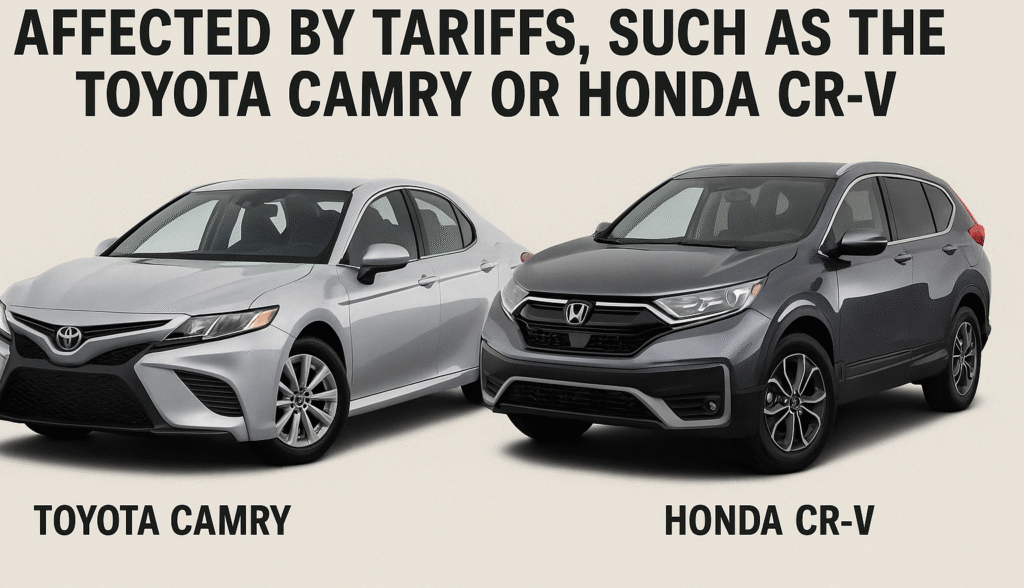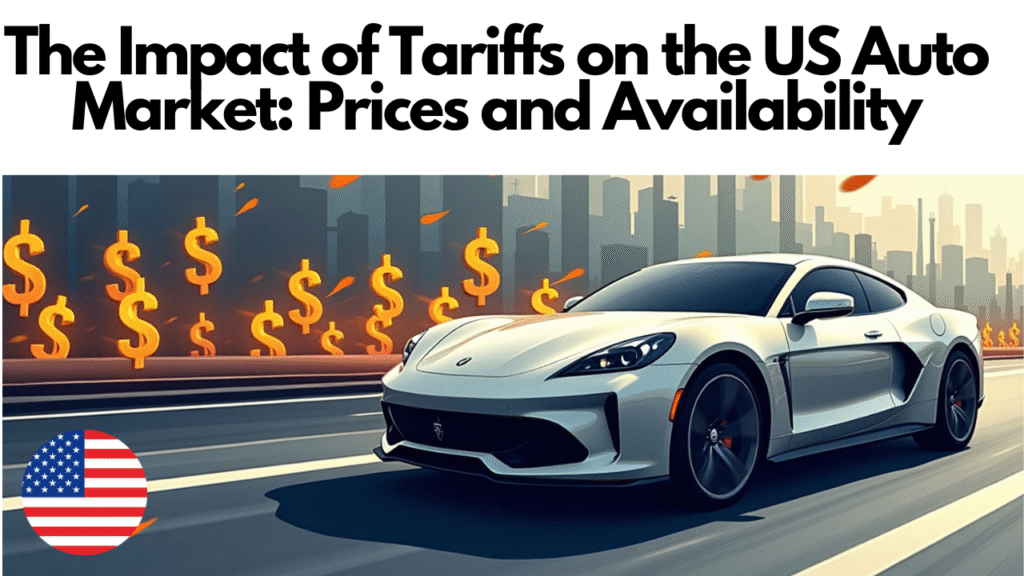Introduction
In early 2025, the US automotive industry is navigating a turbulent landscape shaped by new economic policies, particularly the introduction of 25% tariffs on imported cars and auto parts, effective April 3, 2025. These tariffs, aimed at bolstering domestic manufacturing, have sparked widespread discussion among car buyers, dealers, and manufacturers. For consumers, the immediate concern is rising vehicle prices and potential shortages of popular models. This article delves into how these tariffs are affecting the US auto market, exploring their impact on car prices, inventory availability, and consumer behavior, while offering practical advice for navigating this new reality.
The Tariff Landscape: What’s Happening?
On April 3, 2025, the US government implemented a 25% tariff on imported vehicles and automotive components, a policy designed to encourage domestic production and reduce reliance on foreign manufacturing. According to industry reports, this move has led to a projected price increase of approximately $5,000 per vehicle for imported models, with ripple effects across both new and used car markets. The tariffs affect a significant portion of the market, as many popular brands, including Toyota, Honda, and Nissan, rely heavily on imported vehicles or parts from countries like Japan, Mexico, and Canada.
The timing of the tariffs coincided with a robust spring buying season, fueled by tax refunds averaging $3,170. In March 2025, new car sales surged by 9.1%, as consumers rushed to purchase vehicles before the tariffs took effect. However, this buying frenzy has strained new car inventories, which dropped 10.2% from March to April, leaving only 2.69 million units available nationwide. This scarcity is particularly acute for brands with significant import reliance, such as Toyota and Honda, which reported some of the tightest inventories in Q1 2025.
Rising Car Prices: A New Reality
The most immediate impact of the tariffs is on vehicle prices. For new cars, the additional 25% cost on imported models is being passed on to consumers, either directly through higher sticker prices or indirectly through increased production costs for domestically assembled vehicles that use imported parts. For example, a Toyota Camry, which is partially assembled in the US but relies on imported components, could see a price hike of $3,000–$5,000, depending on the trim level.

The used car market is also feeling the pinch. With new car prices climbing, demand for used vehicles has surged, driving up prices by 0.48% in early April 2025. The average used car now costs $25,180, a 33% increase from pre-pandemic levels, largely due to a persistent supply shortage stemming from production cuts in 2021–2022. Popular models like the Ford F-150 and Chevrolet Equinox are seeing heightened demand, with prices for 1- to 5-year-old vehicles rising steadily.
Consumer Impact
For car buyers, these price increases are a significant concern. A recent survey indicated that 24% of Americans are delaying major purchases, including cars, due to tariff-related cost uncertainties. Budget-conscious consumers are particularly affected, as entry-level models from brands like Nissan (e.g., Versa, up 156% in sales) and Hyundai (e.g., Elantra) are becoming less affordable. Meanwhile, luxury car buyers are less deterred, with the high-end market projected to grow at a 14% CAGR through 2031, suggesting that wealthier consumers are absorbing the cost increases.
Inventory Challenges: Finding Your Dream Car
The tariffs have exacerbated existing inventory challenges in the US auto market. The rush to buy before April 3 depleted dealer lots, particularly for imported models. Brands like Subaru, which saw a 9.1% sales increase in Q1, reported their best-ever March but now face shortages of popular models like the Crosstrek and Forester. Similarly, Honda’s CR-V, with over 103,000 units sold in Q1, is in short supply, forcing some buyers to wait weeks or pay above MSRP.

Domestic brands like Ford and Chevrolet are somewhat insulated, as they rely less on imported vehicles. Ford’s F-150, the best-selling used vehicle, and Chevrolet’s Trax, up 57% in sales, remain relatively available. However, even these brands face challenges, as many of their components are sourced globally, leading to production delays and higher costs.
Regional Variations
Inventory availability varies by region. In states like Texas and Michigan, where trucks dominate (Ford F-Series was the top seller in 2024), supply is more stable. Conversely, in coastal states like California, where imported SUVs and EVs are popular, buyers are facing longer wait times. For example, Tesla’s Model Y, a top-selling EV, is seeing increased demand but limited stock due to tariff-related production adjustments.
Consumer Behavior: Adapting to the New Normal
The tariffs are reshaping how Americans approach car buying. Many are turning to domestic brands to avoid import costs, boosting sales for Ford (501,291 units in Q1) and Chevrolet (443,564 units). Others are exploring used cars, with certified pre-owned (CPO) programs gaining traction for their reliability and warranty benefits. Online car buying platforms, such as Carvana, are also seeing increased traffic, as 43% of shoppers prefer to complete purchases digitally to compare prices and avoid dealer markups.
Hybrids are another bright spot, with 67% of consumers favoring them over fully electric vehicles due to lower costs and reduced range anxiety. Models like the Toyota Camry Hybrid and Honda CR-V Hybrid are in high demand, offering a hedge against rising fuel prices and tariff-driven price hikes. Conversely, EV adoption, while growing (projected at 9.5% of new car sales in 2025), faces hurdles due to limited charging infrastructure and higher upfront costs.
Strategic Buying Tips
For consumers navigating this market, strategic planning is key. Here are some tips to mitigate the impact of tariffs:
- Buy Domestic or CPO: Consider brands like Ford, Chevrolet, or GMC, or opt for certified pre-owned vehicles to save on costs.
- Shop Early: Purchase before further price increases, as analysts predict additional hikes by Q3 2025.
- Explore Hybrids: Hybrids offer fuel savings and are less affected by EV-related infrastructure challenges.
- Use Online Tools: Platforms like Cars.com allow price comparisons and inventory checks across dealers.
- Negotiate Wisely: With low inventory, dealers may charge premiums, so research fair prices using tools like Kelley Blue Book.
The Bigger Picture: Industry and Policy Implications
The tariffs are part of a broader push to strengthen US manufacturing, but their long-term effects are uncertain. Automakers are exploring strategies to mitigate costs, such as relocating production to the US or sourcing parts domestically. For instance, Toyota and Honda are investing in US-based factories, which could stabilize prices over time. However, these transitions take years, and short-term disruptions are likely.
On the policy front, the tariffs have sparked debate. Proponents argue they protect American jobs, while critics warn of higher consumer costs and potential trade retaliations. The auto industry, already grappling with post-pandemic supply chain issues, faces additional pressure to innovate and adapt. Technologies like connected cars and AI-driven manufacturing, highlighted in recent industry reports, may help offset costs by improving efficiency.
Conclusion
The 25% tariffs on imported cars and parts are reshaping the US auto market in 2025, driving up prices, tightening inventories, and altering consumer behavior. While domestic brands and hybrids offer some relief, buyers face a challenging landscape of higher costs and limited choices. By understanding these dynamics and adopting strategic buying approaches, consumers can navigate the market more effectively. As the industry adapts, your car blog can keep readers informed with timely insights into this evolving story.


